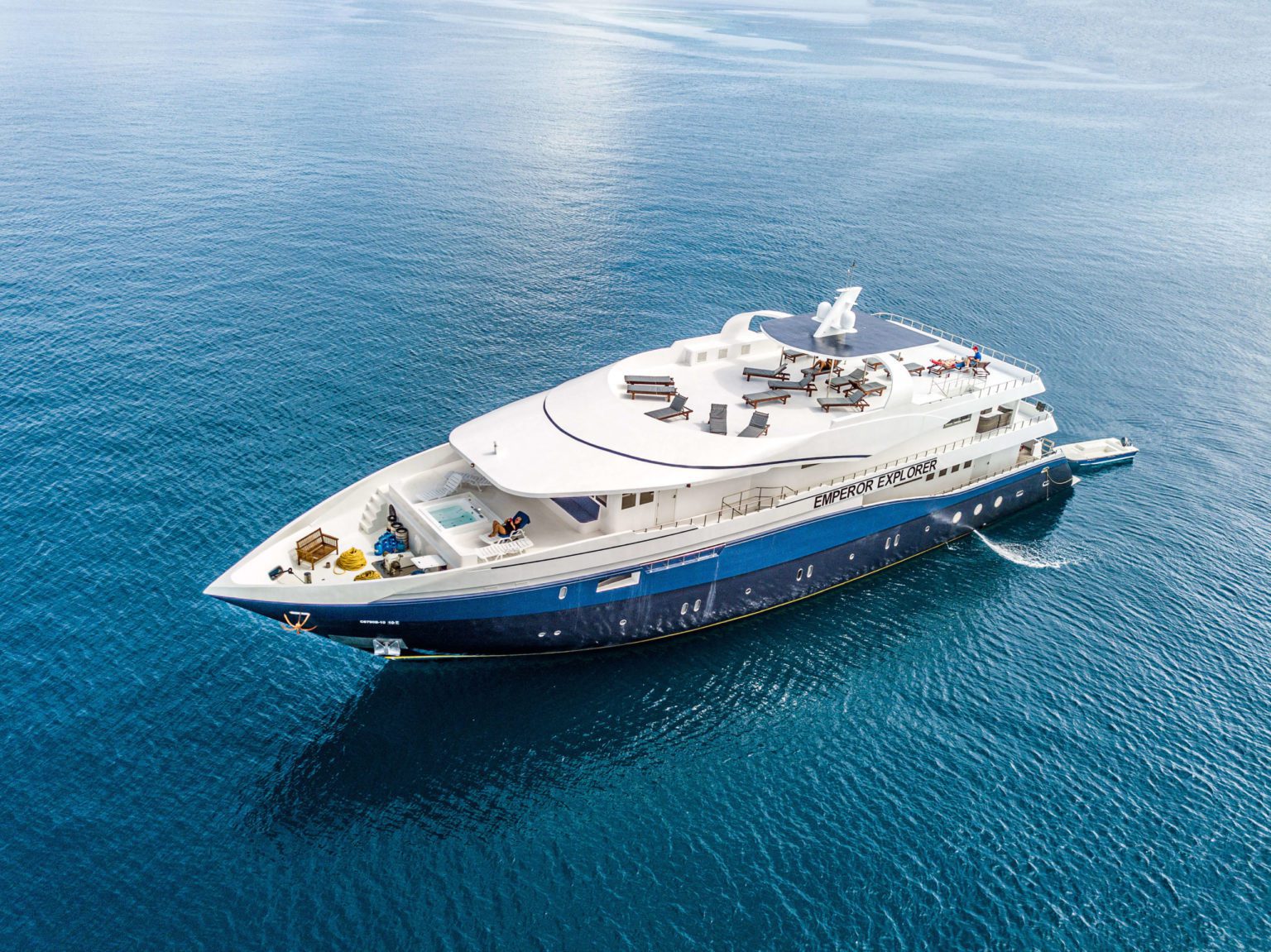When I head off on a dive trip, I want to get as much in-water time in as possible, and there is no better way to maximise your bottom time than going on a liveaboard. I am a massive fan of liveaboards, and here, I will be giving you a comprehensive overview of everything in this liveaboard diving for beginners guide.
What is Liveaboard Diving
Liveaboards. The name kind of gives it away. They are dive boats which you live on board. Now back in the day, when liveaboards first came on the scene, they were – to put it bluntly – decidedly rough and ready, and keen divers were happy to endure grotty cabins, shared toilets and other dodgy elements in order to hit some of the best, more-inaccessible diving on the planet. How things have changed. The remote dive sites are just as awesome as they ever were, but now many liveaboards more closely resemble luxury yachts, with air-conditioning, ensuite cabins, and hot tubs, you name it. Let’s just say you are no longer roughing it when you embark on a liveaboard adventure in this day and age!
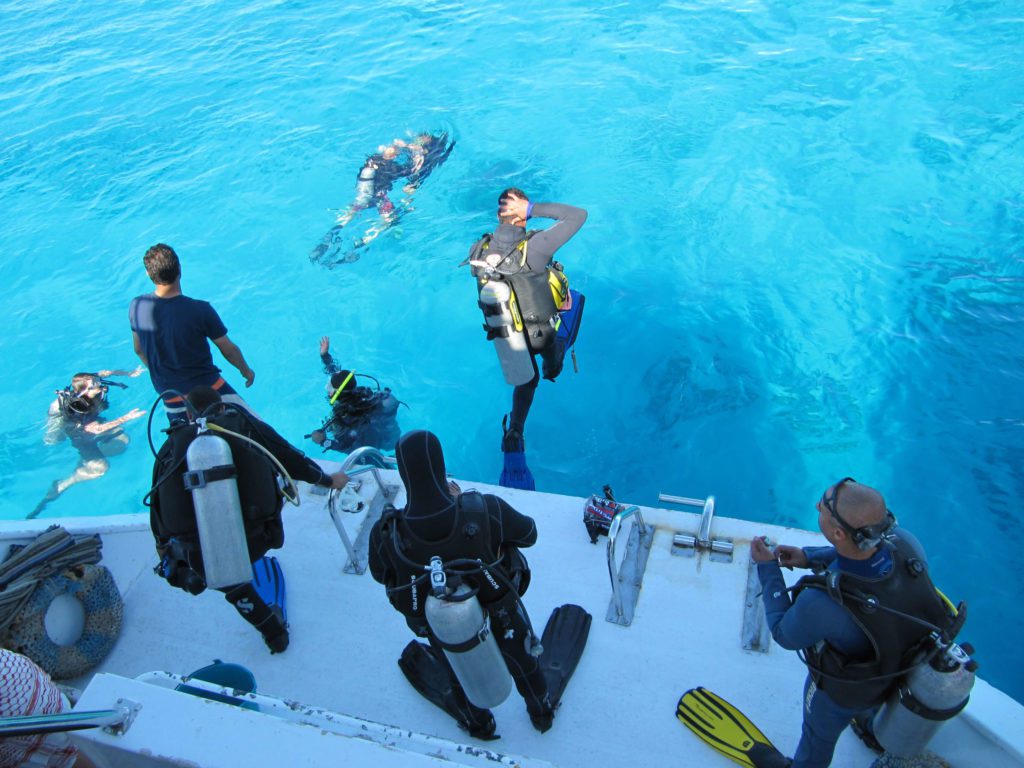
Selecting a liveaboard
OK, so let’s kick things off by selecting a liveaboard in the first place. Where you really benefit from liveaboard diving is when you use it to access out-of-the-way places that cannot be reached by dayboats. Yes, if you are diving somewhere like the Cayman Islands, where most of the dive sites can be dayboat-dived when you are liveaboard diving you can rack up four or even five dives a day, but for me, the beauty of liveaboard diving is being away from the madding crowds and heading out on the high seas.
How long is your vacation time, and how much budget have you got to play with? These two things will narrow down your options and help you select your final destination. We can all longingly dream of heading out to Cocos Island, but if we haven’t got several thousand dollars to hand and a couple of weeks off work, it is just a pipe dream. So, be realistic and give yourself achievable parameters you can work in.
Depending on where you live, there are plenty of liveaboards out there running week-long itineraries around some amazing dive destinations, from throughout the Caribbean, in the Red Sea, across the Indian Ocean and around South East Asia.
If you have ten days or longer at your disposal, then you can look at extended itineraries in these locations, as well as other destinations which require more time in order to actually reach the dive sites. Be aware that the cost will increase the more remote the destination.
Finally, safety. Accidents involving liveaboards are, thankfully, few and far between, but after some much-publicised incidents in recent years, safety on a liveaboard is even more of a top priority, and so you will find that companies are more safety-conscious than ever before. However, for peace of mind, you can ask about what safety features and procedures are in place on your chosen boat when you are booking, but more about that later.
Ah, booking your liveaboard trip. There are various ways of going about this. You can book direct with the boat or parent company, for instance, Aggressor Adventures, and sort out your own flights, or you can go through a dive specialist tour operator, like PADI Travel, and book the complete package. There are pros and cons to both methods. Some people like to trawl about for keenly priced flights and so on, and building the trip is part of the excitement for them, while others are happy to just let someone else do all the hard work. Some of the package deals include dive insurance – an absolute must in this day and age – so it is worth considering all of these factors when making the decision whether to go it alone, or work with a specialist.
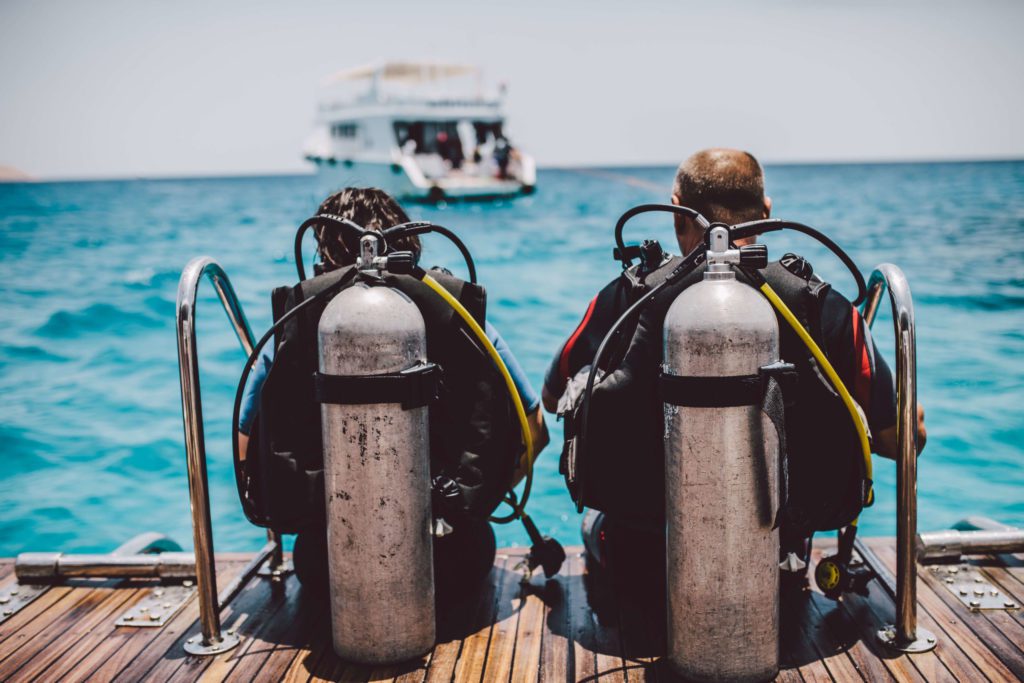
Getting ready to go
So you have narrowed down your choices, selected a liveaboard, booked your trip and now you are getting ready to go. The first thing to remember is that you are going to be living on a boat for a week or longer, so you can leave all those fancy clothes you bring to go out for dinner in the evening. Casual is the name of the game on a liveaboard, which is another reason I enjoy them so much. Shorts, T-shirts, maybe a lightweight fleece for an evening if the temperature drops a little. That’s it. I have got my liveaboard clothing list down to a T now and rarely come back with something that has not been worn. Get creative – I plan to put on a clean T-shirt after showering from a day’s diving and then wear that same shirt the next day in between dives.
It is also worth bearing in mind that storage on boats is limited, so if you rock up with monster dive bags, you aren’t going to be too popular. Consider bags which can flatten down somewhat once you have emptied them, so they are easier for the crew to put in the hold.
If you are going to require rental dive equipment, the sort that out with the boat beforehand. You do not want to turn up for your trip to find that they do not have your size available. If you are bringing your own gear, I’d advise you to get it serviced before you go, if it hasn’t been done for a while. There is nothing worse than setting off on the liveaboard trip of a lifetime and finding that your regulator is free-flowing, or your BCD inflator is not working.
Many liveaboards require divers to carry a reel or spool and a delayed surface marker buoy. I consider these essential pieces of dive kit that all divers should have. However, if you are not familiar with them, get them before you go and get some practice in, so you know how to deploy a DSMB from depth. Again, this is not something you want to be doing for the first time actually on your trip.
Do you get seasick? If you don’t have good sea legs, then it is better to be prepared than feel like death warmed-over suffering on board. Being prone to seasickness doesn’t necessarily exclude you from liveaboard diving, but come armed with the appropriate medication to tackle it head-on. Just make sure that any seasickness tablets are ok to dive on, and if you need them, start to take them before you step on board. It is pointless trying to tackle the issue when you are already feeling as rough as a bag of spanners. It is probably also worth you limiting your choice of liveaboard to those in calmer locations, that don’t involve long ocean crossings.
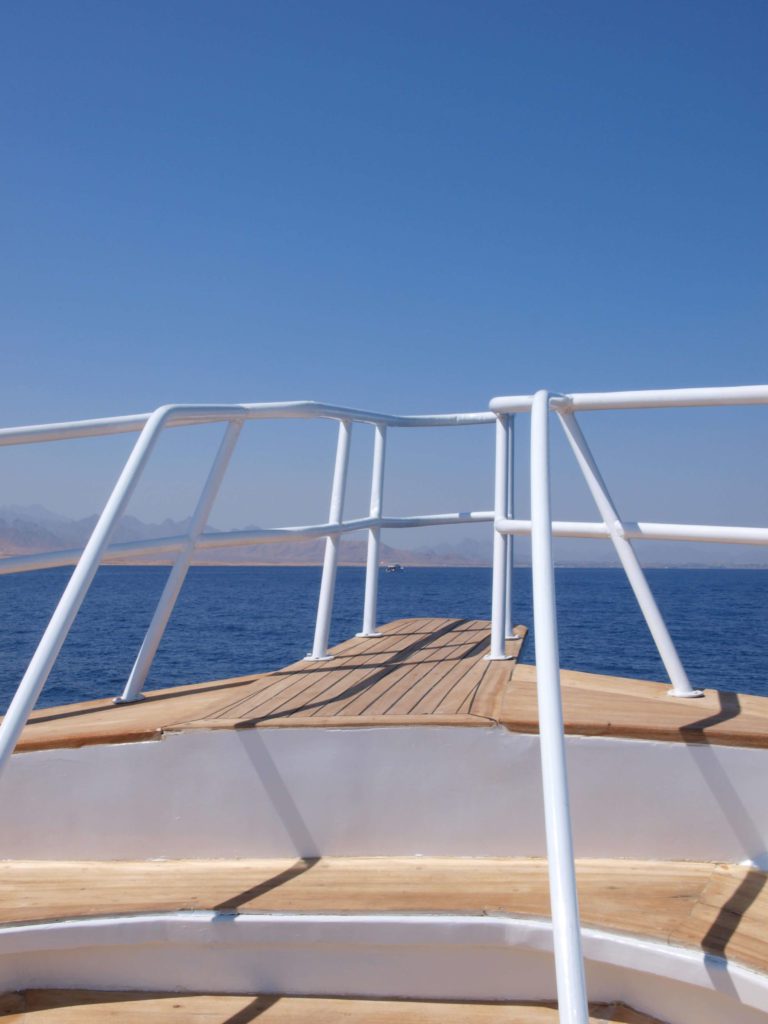
Arrival day
When you arrive on your liveaboard, you will generally be greeted by the crew, often with a cold damp cloth and an ice-cold drink. You do feel a bit like some VIP boarding a private yacht. Your bags will be deposited on the dive deck, and they will allocate your area on the dive deck. Every diver has their ‘spot’ on the dive deck for the entire trip. This not only helps you know where you are going each day, but it also helps the crew keep track of who is still out diving and who is back on the boat. Your BCD and regulator will remain on your cylinder for the duration of the trip, your wetsuit will go on a hanger, and your mask, fins and other accessories will go in a box under your seat. Cylinders are filled on-station, so all you need to do on your return from a dive is turn off your gas, purge your regs and undo the first stage from the pillar valve. If you are not nitrox-certified, consider doing your course before your trip. Many liveaboards offer nitrox fills for free, so it seems a shame to miss out on this bonus. Nitrox has many benefits, especially with repetitive dives such as on a liveaboard.
The crew will generally allocate cabins, and then usher you into the salon for a boat briefing. This will go over all of the facilities on board and run through how to set the air-conditioning in your cabin, what not to flush down the marine toilets, and so on. Some discussion about the plans for the week in terms of diving, etc, usually takes place now too, so you get an idea of what sort of schedule to expect. There is generally a separate dive briefing, to go through the procedures for diving, be that from the main vessel or from a RIB or dive tender, and this usually follows the main boat briefing. You may have been on a gazillion liveaboards, but make sure you pay attention during these briefings – one, it is only polite, and two, there may be elements that are different to your previous trips. Don’t be that person who comes and asks a query that was answered in the briefing because you were not listening.
There will also be a safety briefing, to run through what to do in case of emergencies. This will involve explaining where lifejackets and liferafts are located, you will have to demonstrate putting on a lifejacket, and they will show where emergency exits and hatches are (I’d advise you to make yourself familiar with their operation, don’t just assume you know how to do it) and so on. Check that they have a night watch in operation, and find out where the charging station is for batteries. As I said before, there are very few incidents involving liveaboards when you consider how many are operating around the world, but it is better to play safe than sorry and be prepared.
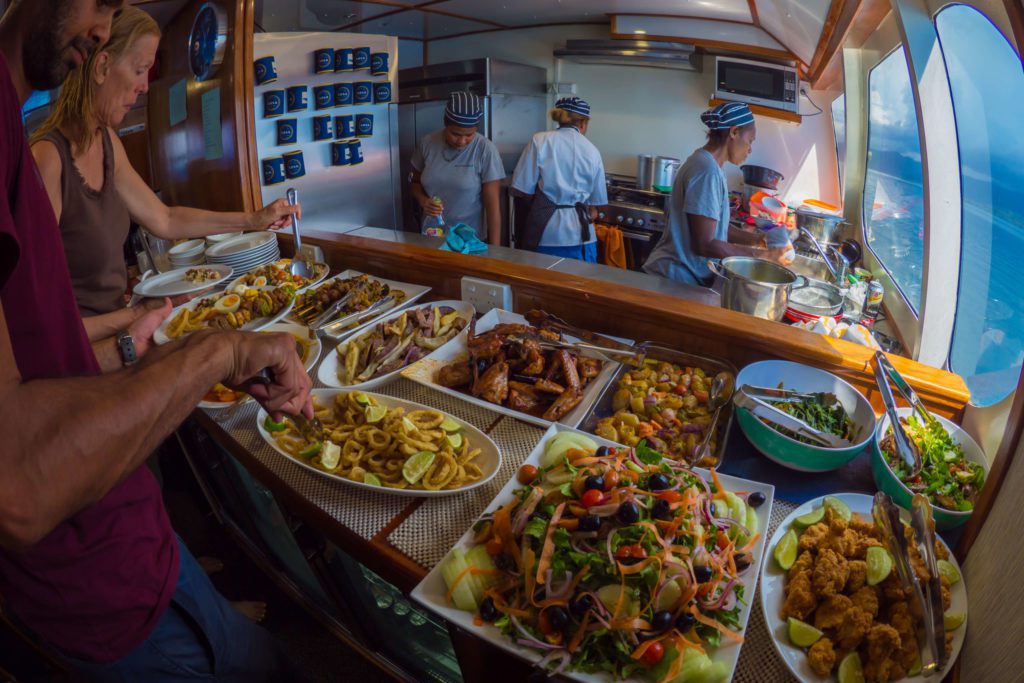
Dive, eat, sleep, repeat
Liveaboards are all about maximising your dive time, and so you can expect there to be anywhere from three to five dives a day on offer, depending on where you are in the world. This will normally be three or four dives during the day, followed by a night dive. You’ll find it a rather hectic schedule to start with – it really is a case of dive, relax, dive, eat, dive, chill, dive, eat, dive, sleep. And then repeat. Don’t feel that you have to do every single dive on offer, even if your buddy or the rest of your group wants to. You are on holiday, so do as much diving, or as little, as you want. I have been on liveaboards where people did the two-morning dives, had a little siesta in the afternoon, and then did the night dive. I personally am not a huge fan of night dives – unless they are on a wreck or something equally exciting – so I tend to do all of the day dives and then relax with a beer in the evening while ploughing through my day’s photographs. That said, there is nothing worse than sitting out a dive and then kicking yourself when the others return with tales of mating mantas, dancing dolphins and wonderous whalesharks.
Many liveaboards these days have paddleboards and kayaks available for your surface intervals, or when you want to skip a dive and do something else. If the itinerary remains close to land, such as in the Bahamas, for instance, then the crew often schedule beachcombing excursions in the dive tender. Trips in locations like this can also work if you have any non-divers in your party. Liveaboards are generally not ideal for non-divers, but if you are on a trip which offers all I have mentioned, then they would have plenty to keep themselves occupied while you went diving.
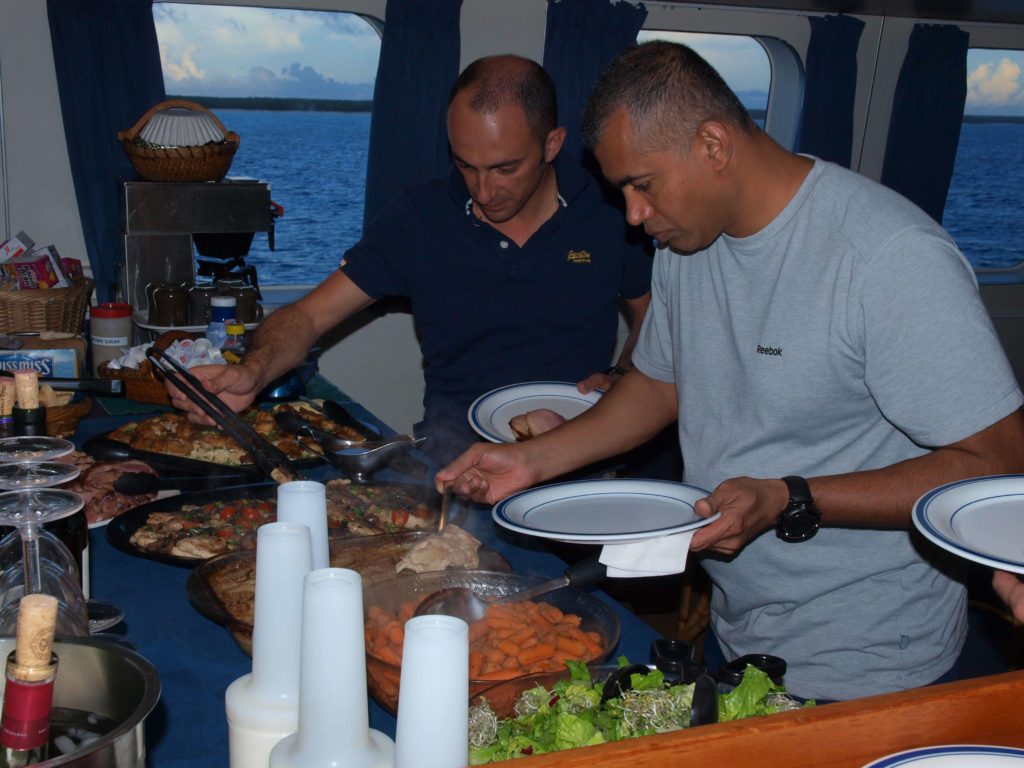
You will undoubtedly be well-fed while on a liveaboard – I am constantly astounded at the variety and amount of food that appears from the galleys on these things. Don’t expect to go back losing a few pounds, especially if the boat has a pastry chef… Oh my god, a warm donut with a coffee, when you come back from a late-afternoon dive, is simply heaven…
Some liveaboards include alcoholic beverages, others charge extra for beers, wine and spirits, but regardless, just be aware you are banging in a lot of dives over a relatively short period of time. Don’t go overboard with the drinks, otherwise, you are risking missing out on dive days if the crew believe you are still under the influence.
While on the subject of drinks, let’s talk water. Most liveaboards are in tropical locations, so as well as the dehydration caused by diving itself, you will be losing liquids from the sun and the heat. Make sure you drink plenty of water during the day – I generally have a bottle of water with me at all times when I am topside and keep refilling it as I drink it. I aim to drink at least seven to eight litres of water when I am somewhere really hot, such as in Egypt in mid-summer. Staying hydrated is one of the best ways to try and avoid any potential issues, so get that water down your neck.
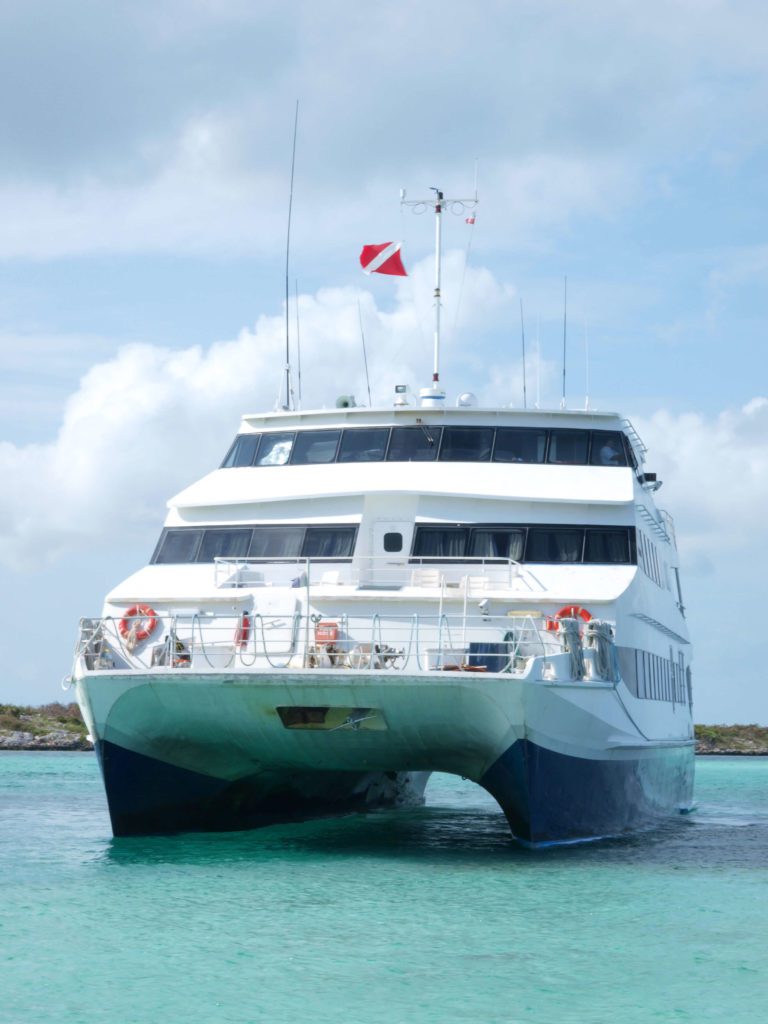
Heading for home
Generally, you do one or two dives on your final day on board, so that you can leave 24 hours before your flight home the following day. This has numerous advantages. You can give your dive kit a good rinse and then lay it on the sundeck to dry out – usually, it will be bone-dry by the time you come to pack up your bags at the end of the day. Just remember to secure anything lightweight so it doesn’t fly overboard. Drape your wetsuits over the railings, but knot the zipper cord around a stanchion. Likewise your BCD – just clip it through the railings.
This enforced downtime also lets you relax and chill out on what is effectively a big yacht. Soak up those final rays of sun, enjoy an adult beverage in the daytime safe in the knowledge you are not diving again, and wrap up your trip in style. Some boats require you to dine off the vessel on the final night once you are back in dock, so if you were going to save a bit of luggage space for that fancy Hawaiian shirt or cocktail dress, keep it for the final evening.
Tipping is commonplace on liveaboards, but how much depends on where you are in the world. In Egypt, for instance, $100 is considered a good tip for a week, whereas, in the Caribbean, it is often touted as being 15 percent of the cost of the trip itself, so a far higher amount. Trips to remote locations such as Galapagos, Malpelo and Cocos can see pretty hefty tips, so it is worth factoring that in when you are budgeting for your next adventure. Check with your potential liveaboards what the expected tip will be when you are researching your destinations.
Common misconceptions
Let’s wrap up this guide to liveaboard diving by dispelling a few myths that I often hear whenever liveaboards crop up in a conversation.
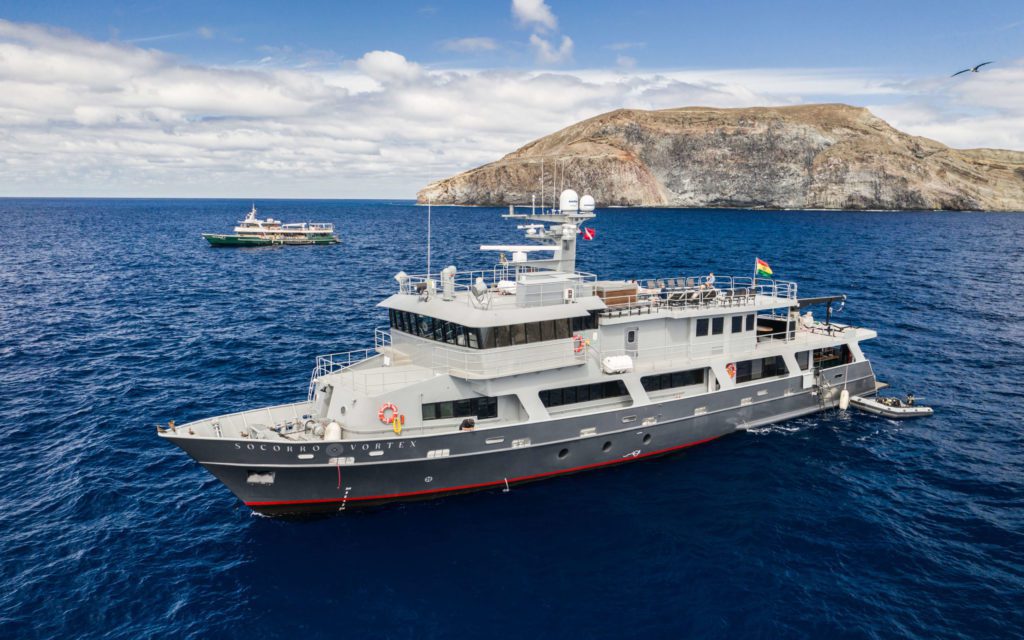
Liveaboard Diving is expensive
At first glance, I can understand some of these concerns. However, once you factor in that the cost includes your diving, accommodation and food – and in some cases, alcoholic beverages – suddenly that price becomes a lot more reasonable. So when you are planning a trip, look at the whole picture – if it is between a land-based vacation and liveaboard diving, tot up all of the costs involved and then make a decision – you’ll often find the liveaboard is actually more cost-efficient.
I am not experienced enough for liveaboard diving
Liveaboard diving isn't just for experienced divers. Now don’t get me wrong, there are certain locations and itineraries that are flagged up as being only for experienced divers due to the conditions that will be commonly encountered, but the vast majority of liveaboards out there are suitable for all levels of diver. In fact, I strongly believe that going on a liveaboard as a fledgling diver is one of the best things you can do. Where else would you be able to rack up 20-plus dives in a week? I have seen open water divers with a handful of dives come on in leaps and bounds over the course of a week on a liveaboard. By the end of the trip, their buoyancy was improved, their rate of air consumption had reduced, and we’d taken pounds of lead off their weight belt. Being immersed – ‘scuse the pun – in a diving environment for a week or two is a fantastic learning experience.
What if I don’t get on with everybody
You are going to be out at sea with your fellow passengers and crew for seven days or longer. It is inevitable that there may be people on board who you do not gel with for whatever reason, but heh, that’s life. I have been on literally hundreds of liveaboards, and by and large, I have seen very few instances where people have really not got on. Just remember, you are all there for the same reason – to do some fantastic diving – and you all have diving in common, so keep conversations away from polarising topics (religion, politics) and you should be fine. Most liveaboards are big enough that you can always find somewhere quiet to just chill out, you are not all crammed together in one tiny space 24/7.
If you want to learn more about liveaboard diving, then watch our Divers Ultimate Guide To Liveaboards
